#classic men's magazine model
Explore tagged Tumblr posts
Text



Modesty isn’t my strong suit 🥃
#red bottom#gold#stylish fashion#montreal#black style#hip-hop style#oldschool#nipsey hu$$le#red and gold#fresh suit#suit style#wedding#classy#classic men's magazine model#classic shoes
2 notes
·
View notes
Text

Angie Bowie for Woman's Own Magazine, 1975.
#SO FUCKING GORGEOUS#angie my beloved🤗#indisputably one of the most beautiful women of the 70s#too bad she didn't model that way anymore#angie bowie#old magazines#classic rock#rockstar gf#rockstar girlfriend#rockstar wife#seventies#70s men#70s rock#70s music#70s fashion#70s#david bowie#glam rock#glam#rock n roll#rock#Woman's Own#old photography#fashion photography#vintage photography#photography#old photos#1970s fashion#70s model#fashion
13 notes
·
View notes
Text

#vintage movies#alternative#nostalgia#vintage#vintage stuff#vintage girl#vintage classics#vintage clothing#vintage style#vintage men#vintage moodboard#vintage male#vintage magazine#vintage motorcycle#vintage model#vintage manga#vintage new york#vintage nostalgia#vintage beauty#vintage books#vintage barbie#vintage boys#vintage bathroom#vintage vibes#vintage vogue#vintage dress#vintage vinyl#vintage coquette#vintage comics#vintage lingerie
2 notes
·
View notes
Text
My Favorite Ladies !!!

Classic men's magazine model Lois Mitchell with a rather... unfortunate hairdo.
I hope it's a wig.
238 notes
·
View notes
Text
Time period post: Christmas part 2 , celebration

This’ll be part 2 of my little Christmas time period series! This post will be more focused on what people did, received and watched/listened to. Very generalized as holidays vary from family to family, person to person even today.
Crafts-
As mentioned in the previous post, there were a lot of crafty decorations at Christmas. Paper chains, paper snowflakes. A lot of ‘do it yourself’ fun upcycle (not called so then) ideas from womens and home magazines. As well as displaying whatever a child made at school, there were also sold kits or guides like what’s commonly referred to as “melted popcorn plastic”

Toys and gifts -
Was specifically requested to include popular toys in this post, the 1960s had a lot of the same style of toys that were popular in the 40s and 50s too, timeless toys. Tinker toys, Barbie (and her friends, which were new and not wiped out yet), Lincoln logs and other building toys. Guns and army men and cowboys for boys and kitchens and stuffed toys for girls… the usual, it was very gendered but at the same time there were always toys in the neutral (play-doh for example)
Train sets! American staple for ages and stuck with a good many from Boyhood to manhood, there’s the sort of trope of a guy having a full on room dedicated in his basement. (My grandpa didn’t have a set up track but collected a LOT- Lionel is king) if not trains other model kits like cars or planes, for the older demographic. You go from push toys to scale model as one ages.

The primary difference is the 60s saw a BOOM in “electronic” toys, real battery eaters or ones that needed to be plugged in. The first lite brite for instance,


Now the characters in the outsiders are teens and beyond toys, so I do want to emphasize what they’d know more from their own childhoods in the late 40s-50s would be the more “classic” and basic toys. Another interesting fact is that radio shows and tv shows has their branding and merchandise since basically the inception of the concept.
There would be special catalogs at Christmas time thick, if not thicker than a phone book filled with deals and all the items these stores had to offer. Toys to lingerie all in one great big book. It’s just as major a part of the holiday season as any, though these big books have fizzled out alongside department stores themselves and catalogs even in the holiday season now are pretty small (I still remember circling what I wanted in the early 2000s but it was a nothing size compared to what they were)


If you ever come across old catalogs or magazines I greatly recommend looking through them as they can tell you so much about time period (for any you’re looking for) from what people bought, what price, how they were advertised to, what demographic, how they dressed, spoke, what was happening etc.
Traditions and games-
Holidays have always had a bit of commercialism to them but the 1960s was really the edge of it when it came to Christmas, in fact several iconic specials even mention it being commodified. For many, it’s the last time Christmas felt truly special and magical… and I do think the season changes as we age there is some truth to that- in decoration and how the holiday was treated. Not just two days but a season, a spirit - feeling in the air.
Thanksgiving ends, December first hits and the Christmas bomb explodes. Family comes, traditions are had and cherished. Shopping, cooking, eating, card sending, photo taking etc. or you go somewhere else- usually to other families homes typically a larger gathering. It’s about that togetherness more than the gifts (though greatly appreciated lol) a chance to relax in an increasingly busy, modernizing world.

Hard candy! Bowls of it placed strategically about the house, Christmas was the time for grazing sweets and other finger foods constantly. Some families would have a appetizer/horderves Christmas Eve— constantly eating and picking and present opening and tv watching, family enjoying. Then your large meal Christmas Day, like thanksgiving usually earlier in the day. Turkey was still common but ham is a runner up (personally, ham is Christmas and Easter.)
Citrus as gifts and treats and candies were also common, apparently it traces back to the civil war when they were more uncommon. Also it’s a seasonal thing, and post ww2 a lot of fruits we now consider normal we’re still new and exciting to receive (so like getting a apple at Halloween it was actually a good thing! Depending on the kid anyway lol)
Homemade cookies, pies, gingerbread and other deserts as well. Now there were more cake mixes or premade things to be bought from bakery’s but when you could it was still a preference to make and gift homemade.
Eggnog. Spiked or otherwise, alongside a myriad of punches ranging from the great sherbet and sprite(or 7Up) to booze that would make your aunt stay another week there’s so much.
Movies, specials and music-
First mentioned this here, going over the family and limited channel aspect. Some movies we consider holiday staples, like It’s a wonderful life had some complicated copyright and weren’t played on tv yet- though might get a re-release. The 1960s also saw many of the classics we now watch release, though the Santa Claus Rankin Bass specials weren’t until 1970 and 1974.
- how the grinch stole Christmas 1966
- Rudolph the red nose reindeer 1965
- frosty the snowman 1969
- the little drummer boy 1968
-a Charlie Brown Christmas 1965

There were also new takes on classic Christmas tunes, the Ronettes sleigh ride particularly took off.
60s releases but also generally good songs-
Little Saint Nick - Beach boys 1964
Christmas (baby please come home)- Darlene love 1962
Someday at Christmas - Stevie wonder 1967 (he also sang ‘Stay gold’ for the movie)
Santa baby
Baby it’s cold outside
Here comes Santa Claus, I saw mommy kissing Santa , holly jolly Christmas , rocking around the Christmas tree, marshmallow world
Need a little Christmas
Burl Ives, bing crosby, Johnny , Perry como, nat king cole- notable classics singers
Ones gang would particularly like-
Run Rudolph run - chuck berry
Mary Christmas baby - Otis Redding 1967
Blue Christmas - Elvis (all Elvis christmas songs)
#the outsiders#outsiders#time period post#writing help#outsiders meta#details#1960s#1960s Christmas#time period post: Christmas 2
25 notes
·
View notes
Note
I've never watched Buffy the Vampire slayer, I'm curious what do you like about it?
Childhood sentimental attachment mostly. It's a classic and has influenced the vampire genre a lot, and it was super popular in Europe. I used to watch it every Saturday night with my mom and my sister when I was a kid. I was a huge fan. I would buy every magazine that talked about it and cover my bedroom's walls with posters of the show. And I feel like Buffy's character was a good role model for me back then. It was quite rare to see such a strong and independent female character on TV. And there were very clear feminist messages at times. I was taught by my father that girls only exist to serve men, but every Saturday I'd watch Buffy kick ass and make fun of men's authority. It helped.
Now, as an adult, I think it's well written and quite fun to watch. The show has a lot of qualities, but it's probably a bit outdated now, especially the first seasons that are mostly for teenagers of the 90s. We aged with the show. And it has its issues, of course, as it was made by a man. Still, with all its flaws, it remains my favourite. Where else can you watch a woman fight demons, vampires, gods, and werewolves, with her group of friends that include a lesbian couple that are also witches? There are funny episodes, dramatic episodes, scary episodes... And for seven seasons, Buffy never once talked about wanting to get married or to have kids. So yeah, I still love the show, but I'm also biased.

28 notes
·
View notes
Text
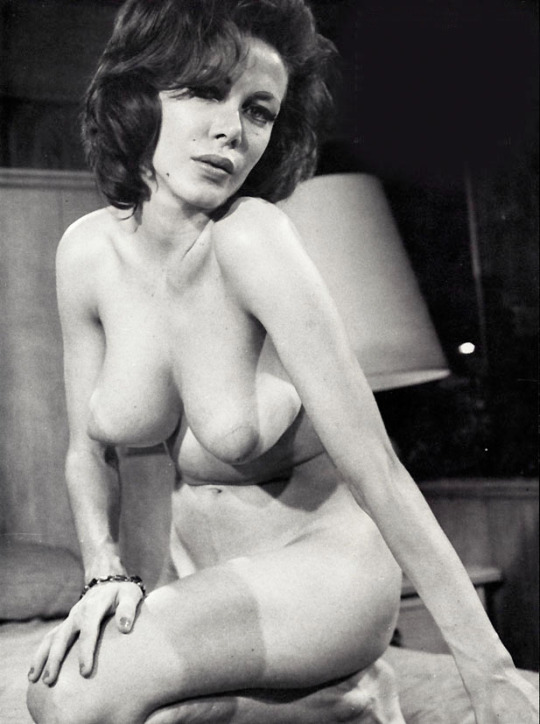
Pat Barrington.
Pat screamed feminine sex appeal, like 'I AM WOMAN!!' at top decibels.
Not such a happy childhood, and lived the life of a stripper with a few forays into film. But her looks and body - oh, my! I would have loved to have her body in her prime!!
Her web bio:
Pat Barrington was an extremely buxom, curvy, and drop-dead gorgeous blonde topless dancer who popped up in a handful of enjoyably trashy softcore sexploitation features throughout the 1960's, often for producer Harry H. Novak's Boxoffice International Pictures and directed by William Rotsler.
Barrington was born Patricia Annette Bray on October 16, 1939 in Charlotte, North Carolina. Her mother Willie Jo Bray had a fling with a local man named Claude Weidenhause and became pregnant at age sixteen. Weidenhause had already left by the time Barrington was born. Pat moved with her mother Willie Jo to Richmond, Virginia when she was only two years old. Willie Jo married another man, Eugene Lee Barringer. But the marriage was short-lived and Pat found herself moving once again with her mother to Hyattsville, Maryland. Willie Jo subsequently married a former Marine suffering from post-traumatic stress disorder. Upset with the unstable situation at home, Barrington left her mother and went out to fend for herself after her sophomore year in high school.
Pat relocated to Baltimore, Maryland, where she hooked up with an Italian-American mobster named Bob. Barrington got married for the first time in the late 1950's. But Pat soon left her first husband after the relationship became abusive. Bob helped Barrington get back on her feet by securing her a job as an exotic dancer. Pat then made a name for herself in Washington, D.C. dancing under the name of Vivian Storm. Barrington caught the eye of local jazz musician Melvin Rees and moved into Rees's abode in Hyattsville, Maryland in 1959. Pat moved down south with Rees in 1960. Alas, Rees was found guilty of murdering a Virginia family and was sentenced to life in prison.
Barrington moved to Los Angeles, California in 1962 and promptly got a job dancing at the prestigious nightclub The Classic Cat. Pat then decided to pursue a modeling career and subsequently started posing in spreads for various men's magazines as well as numerous commercial layouts. After an ill-advised foray into dancing in Las Vegas, Barrington returned to Los Angeles and resumed her career as a model while still dancing on the side. Pat eventually began auditioning for film work in the mid-1960's. Barrington achieved her greatest cult cinema fame as the female lead in Stephen C. Apostolof's unintentionally hilarious horror camp hoot Orgy of the Dead (1965), in which she also performs one of her patented steamy nude dances as the painted Gold Girl. Barrington had another rare substantial starring part as a bored housewife who works as a high-priced call girl in the seamy Agony of Love (1966). More often, though, the stunning and spectacularly alluring Pat was relegated to secondary roles as a go-go dancer in such delightfully down'n'dirty low-grade fare as Lila (1968), The Girl with the Hungry Eyes (1967) and Sisters in Leather (1969). She appeared as herself in both the lurid mondo item Hedonistic Pleasures (1969) and Russ Meyer's blithely silly documentary Mondo Topless (1966). During this time Barrington was briefly married to cinematographer Robert Caramico.
After calling it quits as an actress, Pat left Los Angeles and moved to New Jersey with a singer named Romeo. Barrington soon found gainful employment dancing in clubs up and down the East Coast under the pseudonym of Princess Jajah. In the mid-1970's Pat branched out into topless dancing. She settled down in Cliffside Park, New Jersey in 1980. Barrington eventually dumped Romeo and became involved with a much younger man named Robert. Pat moved with Robert to Fort Lauderdale, Florida in 1984. Pat worked as a stripper using the name Yvette at assorted seedy clubs throughout Florida. After retiring from dancing in the early 1990's, Barrington went on to work as a telemarketer. In her later years Pat also helped local animal rescue groups (she was a lifelong lover of animals). Barrington died from lung cancer at age 74 on September 1, 2014.
29 notes
·
View notes
Text

Joanne Latham.
Latham was born in Wolverhampton. After studying classical ballet for nine years she took a scholarship to the Royal Ballet School. A dancing competition led to her modelling for retailer Miss Selfridge. This led on to other modelling and television commercials, including appearing on Page 3 of The Sun and in the Daily Mirror.
In 1978, ATV made a documentary about her called "A Model's Dream" in the series England, Their England. After a shoot with leading glamour photographer Patrick Lichfield, he included her photo on the inside front cover of his book The Most Beautiful Women, a collection of his photographs.
In 1979, men's magazines Playboy and Penthouse competed to publish the first nude pictures of her. Latham signed a contract with Bob Guccione and Penthouse, which promised a fee of £70,000 for her to appear in the September 1979 issue, which was also the 10th Anniversary of the US edition. Latham was selected as Pet Of The Month and featured on nineteen pages of the magazine, including the cover. That edition made U.S. history, selling more in dollar percentage than any other magazine to date and making a profit of $18 million. She also appeared with other Penthouse Pets in the televised broadcast pageant for the selection of the 1979 Pet Of The Year, in which she participated in the opening segment with singer Frankie Valli and a fashion show. After a brief affair with Guccione, Latham's contract was terminated with Penthouse when she fell in love with Guccione's son. She moved from New York to Los Angeles and briefly became the girlfriend of Hugh Hefner, living in the Playboy Mansion. In the early 1980s, Latham returned to England to her Midland home in the village of Tettenhall.
Latham was featured on the cover of Death Penalty, the debut album by the heavy metal band Witchfinder General, which was released in 1982. She also featured on the cover of Friends of Hell, their second album released in 1983.
In 1982, Latham was involved in a serious car accident, after which she gave up modelling and opened the first 'workout' keep-fit studio in the UK. Her daughter, Elizablue Nairi, was born in southern Spain in June 1985.
In later years, she studied drama at Birmingham Repertory Theatre, working under a director of the Royal Shakespeare Company and went on to play the lead role in a government-funded film for the arts.
In 1999, Latham became a teacher of yoga training at the Sivananda Yoga Vendanta Centre in Nassau, Bahamas. Since then, she has continued working in the healing arts. Despite several offers, she has refused to write her autobiography. She has set up her own charity with her daughter 'Blue', who is also a teacher of yoga.
40 notes
·
View notes
Text
Who is Kim Young Jin?


The man behind the looks, bringing BTS' vision to life, from photo-folios, to music videos to high fashion magazine photoshoots.
Kim YoungJin and his team have worked with the members as a group and as individuals on their concerts and everything in between.

“Seoul-based stylist Youngjin Kim has been obsessed with fashion since he was a child, saving up his pocket money to buy magazines. “It was so special to me,” he remembers. After majoring in photography at college but leaning into the looks just as heavily, somebody suggested he give styling a go and well, the rest is history. These days, he’s working with BTS, but can also be found dressing the likes of NCT 127, Super M and Daniel Kang for cover features, campaigns and album artwork.”
ID Magazine - VICE Interview (March 2022)
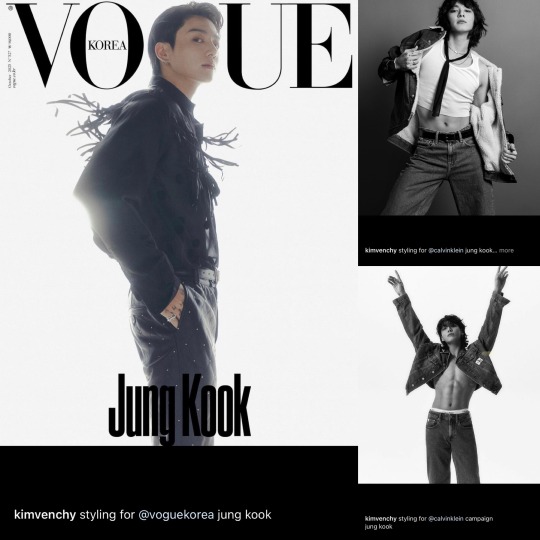
👤What was your entry point to styling?
“I worked as an assistant to [Korean actor] Jin Oh Jeon’s stylist for about five years and came to understand the overall system of the Korean fashion scene. Looking back, that time was so precious; time that brought me to this moment, I guess.”



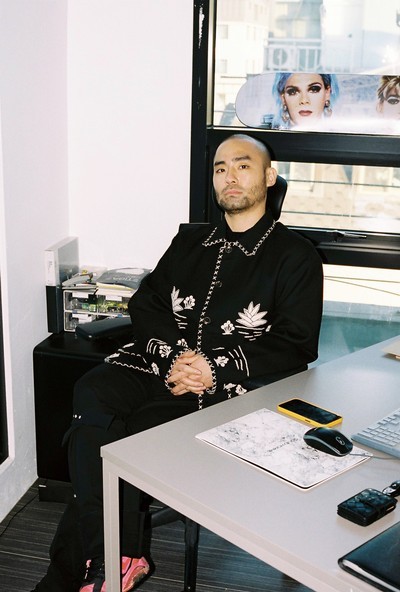
The man himself, Stylist @kimvinchey on IG

Kim YoungJin styled BTS and Bang SiHyuk for their TIME Magazine 2022 photos.

Kim YoungJin has been head stylist for MVs such as 'My Universe', styling Jimin for 'Vibe', j-hope for 'On The Street' to name but a few MVs
👤Tell us about the type of work you do.
“Styling for albums and projects such as “My Universe” by BTS and Coldplay is receiving tremendous attention on a global scale. Whenever I style an idol group, I think of a designer creating a collection. I mix and match clothes from different Japanese brands such as Comme des Garçons and Yohji Yamamoto, and I express my own aesthetic with styling to fit each concept. I also style various editorials for fashion magazines. I consider myself a fashion stylist, and when I first took on the role of an idol stylist, I was proud of demonstrating what kind of visuals could be created if a fashion stylist takes on an idol.”

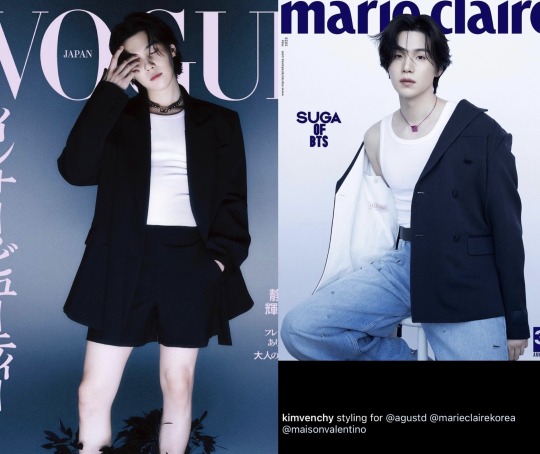
Kim Youngjin has worked with the members on the brand ambassadorship endeavours, such as styling for mag shoots like the Valentino photoshoot with SUGA

👤Of course, a stylist doesn’t just ‘style’. You’re often a bridge between celebrities and brands — a look you introduce to an idol could quickly become a trend.
“Exactly. In many cases, celebrities or models with good momentum are recommended to brands or magazines, and if the celebrity is an ambassador of a fashion house, they communicate more closely with the fashion brand.”

👤What do you think is the most important thing in styling?
“I try to combine the latest fashion trends with classic items. For instance, I like pairing Levi's denim and casual sneakers with a Saint Laurent blazer. As details are crucial for men's clothes, the overall outfit is often impacted by details such as perfect length and sleeves.”



In Chapter 2 of BTS' journey, Kim YounJin has been part of many of the members solo projects that were even released post enlistment for some, such as j-hope LV campaign and styling for Esquire Magazine


👤Do you have a favourite brand or designer?
“I’ve always loved Givenchy by Riccardo Tisci, which has had a huge impact on me as a stylist. I have such respect for a person who has accomplished what they’ve wanted to do for a long time — I think Miuccia Prada and Raf Simons are both great in that regard too.”

“I’m 32, so I was in elementary and middle school in the 1990s, which was when I started getting into fashion. Since I was really young, like 10 years old, I used to go downtown to buy clothes by myself. In elementary school, I wore baggy sweatshirts and jeans like this Balenciaga ensemble. I liked hip-hop and K-pop even back then and would dress up like this and dance at school festivals. Retro fashion is back in style, so it doesn’t at all look out of place or time to dress like this again.”
Mr Porter - The Journal Interview (Oct 2020)


💜
Special Mention:

**Though Taehyung has worked with Kim YoungJin with group projects the Head Stylist for Taehyung (V) during Chapter 2, in particular his Layover Era has been @HIJIBIN, Taehyung's personal stylist.
Info on Kim YoungJin:
https://www.mrporter.com/en-sg/journal/fashion/youngjin-kim-contemporary-fashion-classic-style-k-pop-1445414
#Jimin#Jungkook#BTS#RM#Namjoon#Jin#SUGA#Yoongi#Hoseok#j-hope#Taehyung#V#Kim YoungJin#Fashion#Stylist
121 notes
·
View notes
Text

Oliviero Toscani
Photographer and art director who oversaw a series of controversial ad campaigns for the Benetton fashion brand
The art direction and photographs of Oliviero Toscani were provocative not for what they showed – real life, he said, complex and contradictory – but where they were seen. The images, subjects ranging from a bloodied newborn baby to the condemned of death row, would have been unremarkable on the editorial pages of a classic photo-reportage publication such as Life or Paris Match. But they sprang out of the safe spaces reserved for prestige adverts at the front of fashion magazines, or were pasted up on big billboards.
Toscani, who has died aged 82, regarded advertising as the most powerful medium, and claimed an artist’s right, like Michelangelo, to express his ideas in it. Like Michelangelo, he had a patron of papal benevolence, Luciano Benetton, who paid for the spaces where Toscani’s creations were seen. Benetton had co-founded a family firm that evolved into a company making mid-price fashion knit separates, with an international chain of shops. He wanted advertising that promoted an ethos for the brand, and in 1982 recruited Toscani as art director.
Toscani already had a reputation for sheer cheek in fashion photography. In 1971, the Jesus Jeans company – its name a deliberate affront in an Italy where the Catholic church dominated public morality – hired him for a campaign to illustrate slogans that subverted Christian sayings. He superimposed the words “If you love me, follow me” on his close-up pic of his girlfriend’s backside, clad in jeans cut off short to expose chunks of buttock. After the posters went up, carabinieri were sent in to break up the protests.
Toscani’s early work for Benetton was gentler, though. Unusually for the era, the company designed fashion for men, women and children, and its very Italian ideal was a family group all clad in co-ordinated, paintbox-coloured, Benetton. Toscani extended that concept into a “family of man” theme in 1984, assembling young models from the wider range of ethnicities available in the fashion business since the 1970s, and pushed that further by casting amateurs from many countries and cultures. Whole villages, including mafia-haunted Corleone in Sicily, posed in Benetton knits. A Toscani-directed Benetton ad was benign globalisation – equality through clothing, made in Italy, that suited everyone everywhere. No captions, just a small green balloon with the Benetton name, logo, and the words “All the colours in the world”. Later the firm renamed itself United Colors of Benetton.
But the advertising still showed the products, never satisfying to Toscani. His education had been in tougher photographs. He was born in Milan, to Dolores (nee Cantoni) and her husband Fedele Toscani, a Corriere della Sera photojournalist of the hardest school, his most famous image the hanging corpses of Mussolini and his mistress. Toscani acted as his father’s lab assistant and messenger, and recalled how his schoolteacher once read a newspaper with a picture on the front page he had personally delivered to the paper’s offices the previous day; the boy thought, “he knows everything one day later than me”.
The confidence that training gave Toscani led him to an art and design college in Zurich, Switzerland, then into art direction, and fashion photography, which in Italy in the 60s was a relatively new field. When it took off, its imagery came from different sources – high art and low realism – and went in different directions, especially social and political protest, than such work elsewhere. Toscani contributed pictures to Vogue Italia of the late 60s and 70s, which was like no other Vogue – it considered political provocation molto elegante.
The Benetton company in the 80s was so successful that the clothes almost sold themselves. Toscani thought they no longer needed to appear in the ads – “Selling jumpers is the company’s problem, not mine” – and that the expensive page, wall and television screen space they occupied could be better employed to show life itself, with an occasional inflammatory joke, such as actors cast as a nun and a priest kissing.
From 1990, Luciano Benetton gave Toscani licence to fill those spaces how he wanted, retaining only the Benetton label in a corner, as sponsor. Toscani stared directly and hard at the sex and death often present, but only allusively, in advertising: he featured an abstract of coloured condoms, an interracial lesbian couple with their adopted baby, a graveyard of the Gulf war, a pieta of the death of the Aids victim David Kirby. The pictures were meant to surprise. They shocked, and divided opinion, which made for major publicity.
In 1991 Luciano Benetton also sponsored Toscani, along with the graphic designer Tibor Kalman, to launch a quarterly magazine, COLORS, published until 2014 in six languages and 20 countries, and full of challenging subjects and images. Its creators’ belief in the beauty to be found in everyday global reality had a strong effect on a last generation of magazines. In 1995, Benetton also sponsored Fabrica, a Toscani-headed creative education centre in the Benetton home town, Treviso.
Toscani seemed to have mellowed out of extreme outrage – in a 1998 catalogue called Enemies, the geopolitical content was merely Israelis and Palestinians photographed agreeably together, wearing Benetton. But in 2000 he produced a 96-page booklet, distributed in an issue of Tina Brown’s glossy Talk magazine, with his own portraits of death row inmates in US jails, plus interviews. There was a discreet direction to Benetton’s website on its last page.
The resulting furore caused the Benetton firm, already changing direction as it lost out to international fast-fashion enterprises, to dismiss Toscani. He did not return until Luciano Benetton, intent on revitalising the brand, invited him back in 2017. The family enterprise had meanwhile widely diversified, and controlled a company managing and maintaining Italy’s toll roads, including the Moranti Bridge, in Genoa, which collapsed in 2018, killing 43. During a live radio conversation about the Fabrica centre, Toscani was questioned over the tragedy, and answered: “But what difference does it make if a bridge falls down?” He later apologised, but this ended his Benetton career.
Toscani’s third wife, Kirsti Moseng, and their children, Rocco, Lola, and Ali, survive him. Two earlier marriages ended in divorce. With his first wife, Brigitte, he had a son, Alexandre; from his second marriage, to Agneta Holst, he had two daughters, Sabina and Olivia.
🔔 Oliviero Toscani, art director and photographer, born 28 February 1942; died 13 January 2025
9 notes
·
View notes
Text
My Favorite Ladies !!!

Lois Mitchell came by as well with a welcome since both she and Ruth are in the "classic men's magazine models" division.
99 notes
·
View notes
Text
Assigning MHA characters Fashion Subcultures Pt 1: Gyaruo Denki !!
Ever since I saw the headcanon, I've been obsessed. I wish I could draw but all I can work with rn is pinterest and my imagination 😓
Denki- he literally has the classic gyaruo cut (the "shaggy" look), he wears a choker lol, I feel like his personality kind of fits what one would think a stereotypical gyaruo acts like (based off of the wiki: carefree, rebellious, cheerful, loud....).
(Unfortunately, I could not find many blogs, articles, or anything talking in depth about Gyaruos, just pictures. These pictures were found on different Gyaru/J-fashion wikis or Pinterest, finding pics of gyaruo is hard </3
I do know that the last two pics are Takazumi Hikiti, a model for the Japanese Magazine Men's Egg, his old blog)












2 notes
·
View notes
Text
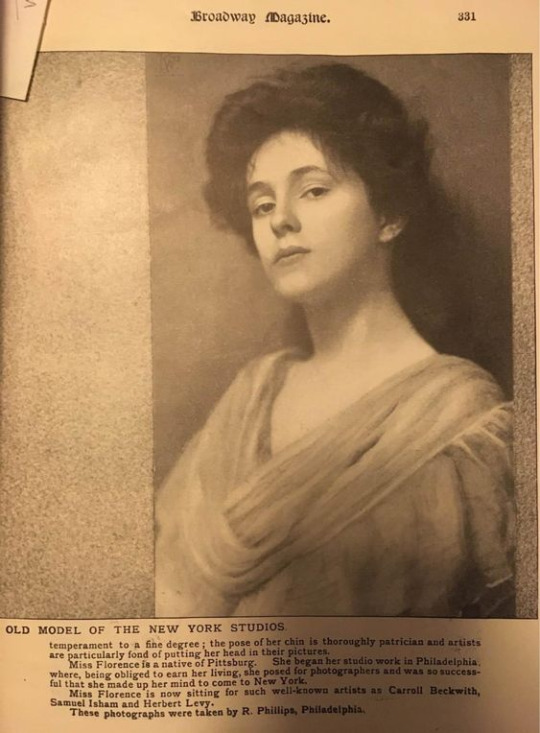
Broadway Magazine page showing the beautiful Evelyn Nesbit, born Florence Evelyn Nesbit (1884 or 1885 – 1967): Born in a small town near Pittsburgh and later building her life in New York City, Evelyn helped financially support her family after her father died when she was age 10. Naturally blessed with classic beauty, Evelyn Nesbit had a promising future in the arts. She started out as an artists' model and chorus girl before venturing into acting in theatrical performances in New York City.
Evelyn Nesbit suffered from the abuse, torment, and manipulation at the hands of more socially and financially powerful individuals such as her husband Harry Kendall Thaw and early benefactor Stanford White. The two men loathed and mistrusted one another, while Thaw sought to take revenge on Stanford White. Evelyn later became entangled in the circumstances of the sensational murder of Stanford White after the bitter Harry Kendall Thaw shot him dead at Madison Square Garden's rooftop theater in 1906.
Regardless of these tragic circumstances, Evelyn Nesbit lives on as a muse of the Edwardian Era, embodying a beautiful, swanlike, and youthful vision for the time period's "Gibson Girl" aesthetic.
In the later part of her life in 1955, Evelyn Nesbit assisted with the production of the 1955 film The Girl in the Red Velvet Swing, based on her tragic experiences with Mr. Thaw and Mr. White which exploded into the sensational murder of Mr. White. Evelyn Nesbit courageously assisted with the film's production, shedding light on her traumatic experiences.
#evelyn nesbit#gibson girl#madison square garden#american history#new york city#edwardian era#broadwaymagazine#theater history#vintage magazine#20th century#artist model#muse
11 notes
·
View notes
Text
Pat Barrington (born Patricia Annette Bray, October 16, 1939 – September 1, 2014) was an American Classic Men's Magazine Model, Actress And Dancer active from 1965 to 1969.

#pat barrington#1960s#classic men's magazine model#gif#movie#video#dancing lady#dancing#amazing body#amazing breasts#beautiful#beautiful hair#buxom beauty#favorite#magnificent#magnificent breasts#outstanding#rog9
332 notes
·
View notes
Text

Chapter Four. The Cult of Masculinity
The monumentalism of fascism would seem to be a safety mechanism against the bewildering multiplicity of the living. The more lifeless, regimented, and monumental reality appears to be, the more secure the men feel. The danger is being alive itself. —Klaus Theweleit, Male Fantasies [88]
Roberta Pughe was in second grade when her family moved to Fort Lauderdale. The family attended the church run by the Reverend D. James Kennedy on Commercial Boulevard. She grew up, along with the congregation, which eventually moved to a sprawling white building on Federal Highway.
By the time she was a teenager she was doing part-time modeling, taking tennis lessons from Chris Evert’s father and studying classical piano. She was an honors student and captain of the cheerleading team at Stranahan Public High School. When Pughe was 13, her mother was diagnosed with polycystic kidneys, a condition in which multiple cysts in the kidneys deplete their function. This moment of panic, of looming mortality, changed the household. Although she would learn to cope with the illness and survive for many years, her mother believed that her life was about to end.
“It was somewhere in there that she told me that she was going to die,” Pughe says. “Her two kidneys were functioning as one. So she was going through her own depression and had a born-again experience.”
Her mother, who had once attended Kennedy’s church as a Sunday ritual, threw herself into the activities of the congregation. She led coffeehouses and home Bible studies. She took part in healing services, and pastors from the church came to the home and did a hands-on healing with oil in an effort to thwart her disease.
Roberta and her brothers fought their parents’ efforts to pull them into the church. They made fun of the teenagers who attended Westminster Academy, the church-run high school. Roberta, who retreated to the third balcony during Sunday services, passing notes to her friends, paid little attention to the sermons preached by Kennedy before a congregation that had swelled to 10,000 people.
“Then one day, Nicki came along, who was a 25-year-old stud,” she says. “He was very, very good-looking, with brown eyes, brown hair, a mustache and he rode a motorcycle. I went after him. He was my ticket to God. He started taking me to Bible studies. I started attending Bible studies two weeks before my sixteenth birthday and had a born-again experience.”
The embrace of the new community, the sense that she had found an extended family, was at first exciting and appealing. But it also soon brought with it radical changes. She was told to adopt a more “Christian” lifestyle. Funk and pop music, her nonbelieving friends, the part-time modeling jobs and even the secular high school were, she was told, thwarting her attempts to be a Christian. She destroyed her Motown and Michael Jackson records. She gave up modeling. She transferred to Westminster Academy, Coral Ridge’s Christian school. She walked out on her old community.
“I was doing TV shoots, was in magazines,” she says. “I was doing lots of stuff that now was sinful. All of it stopped. I started going to the Greenhouse Christian fellowship at the church four nights a week, where we did Bible study.”
Pughe turned her back on the world of nonbelievers. She struggled to obey. She suppressed her periodic waves of anger and frustration at the abrupt, painful and difficult changes imposed upon her, believing she had no right to question the demands of the church’s male hierarchy. She feared the judgment and disapproval of her new community. She feared that she would displease God. She kept down her longings for freedom and escape from the claustrophobic community. She was told to blame these feelings on Satan. She wanted to be “a good Christian woman.” The infusion of Christian jargon and clichés into her vocabulary, the inability to speak with others who might have validated her doubts and anxieties, left her unable to articulate or confront her feelings of dislocation. No longer sure what she felt or believed, she worked harder to obey.
Pughe soon believed that God would punish her if she failed to carry out the demands of the men who spoke for God, those who now defined right and wrong. And the more she struggled with her inner turmoil, seeking to please God, which meant pleasing the male hierarchy that now dominated her life, the worse she felt. All these anxieties, however, remained unnamed, unrecognized.
She began working at the GangWay Ministries for youth at the church and was involved in Kennedy’s Evangelism Explosion program, designed to teach people how to spread the Gospel in 20 minutes. The continuous dialectical training, much of it numbing in its boredom and repetitiveness, made it hard to articulate her doubt. Her life was filled with church meetings, new lessons to be learned and lectures. Solitude and reflection, along with thought itself, became difficult. Her head was spinning with slogans, clichés and religious jargon tht gave believers the illusion of knowledge.
I meet her late in the afternoon in her office in New Jersey, where she now is a family therapist. “It is a fear-based model,” she says. “The idea is to make people afraid and to then proceed to share the Gospel. I began training ministers from around the world. We were training ministers [on] how to train their youth to go out and proselytize. We used to go cold turkey onto the beaches. We used to go to shopping malls. There was a pamphlet with questions, and you had to ask all of them. You would go up to people cold, and you’d always start with the two questions.
“‘So would you like to accept Jesus Christ as your Lord and Savior right now?’ we would ask,” she remembers. “We can pray the prayer.”
She went to Calvin College in Michigan, a Christian school, when she graduated from Westminster Academy. It was the only college to which she applied. During her senior year at college she decided to go to seminary, although she could not be ordained because she was a woman. Her father announced, however, that he would not pay for seminary. He told her it was time for her to get married and start a family. This, he assured her, would make her happy.
“In my senior year, I remember hearing on the radio an advertisement for the Miss Greater Grand Rapids Scholarship Pageant, which was a part of the Miss Michigan Pageant, which was a part of the Miss America Scholarship Pageant,” she says, “and I could win $2,500 in scholarship fees, which would cover my first semester of seminary. I entered the contest. I threw together a bathing suit, high heels, and I think I played ‘Für Elise.’ I pulled something out of my bag of tricks and I won.”
She started competing for the Miss Michigan contest. She practiced three hours a day on the upright piano at Calvin Seminary. Many of her professors were cheering her on, telling her that, like the biblical figure Esther, she had been called to such a time as this. She was going to use the platform of the Miss America scholarship pageant, she told herself, to spread the Gospel. Her victory seemed ordained by God.
“This was a legitimate way a woman could have a pulpit,” she says. “I bought all this. I was still quite asleep. This is what is so scary. I was anesthetized. I was programmed to believe all this. It was reinforced by my family and the church. There was this double authority that came from God. The male authorities in my life spoke for God. God spoke through my father, who was very authoritative and who held the power, as did the twelve male pastors in the church. All the leaders in my life were male. On Sunday in the sermons God spoke to us as a male. I had nothing to plug into other than what these men told me, and they were all telling me the same thing.
“My female truth was not diminished, it was completely silenced,” she remembers. “It was obliterated. I had a mother, who was not a questioning female, who had also been socialized to be obedient. The good woman, they tell you, is the obedient woman. I did not have any model of a woman who owned her own feminine truth.”
She looks back on the time as one filled with fear, fear of not conforming, of disapproval in the eyes of the men who spoke for God, of falling out of God’s favor, of not living up to Christian standards and incurring God’s wrath and punishment.
“I was not conscious of this fear,” she says, “and fear has a lot of power when it is not named. I didn’t even know I was afraid. I was not allowed to be afraid. The message that is communicated is there is nothing to be afraid of. When you hear someone say this, then that is when you should be most afraid.”
She entered the contest, now certain that God had chosen her to be Miss America and spread the Gospel.
“I met Cheryl Pruett, who had been the previous reigning Miss America,” she says. “She too was an evangelical, born-again and from the South. She was just as convinced that God was raising Christian women to take the platform.”
The state pageant was at Muskegon. She spent a week being paraded around before local groups, smearing Vaseline on her lips and keeping a smile pasted on her face. She lost ten pounds during the week before the pageant and did not have time to take in her gown, which now hung on her. When she mounted the stage, many of the professors from the seminary had come to watch.
“There I am in my bathing suit and my four-inch heels and, you know, professing God, you have three minutes to say who you are in an evening gown,” she says. “I said something about God and my mission for God. So I was playing the piano, at that point I had played Rachmaninoff’s Prelude in G Minor. I suddenly went blank. I thought, ‘What are you doing here?’ It was a moment of clarity as I sat there on that stage. I didn’t win. I was in the top ten, but that blank moment during the prelude lost me points. I was devastated.”
She left the seminary. She joined the staff for youth ministries at Coral Ridge, where she was the only woman. But even as she evangelized to others, she struggled with anger and betrayal. She felt God had called her to the beauty pageants and then abandoned her.
“How could God lead me down this path and promise me this? And then not come through?” she remembers asking herself. “I blamed God for failing to make my secret fantasies come true. I never acknowledged, of course, that these were secret fantasies, that what I wanted was fame and fortune. I wasn’t allowed to name these fantasies, not even to myself. I was going to buy my dad a Jag, because that was his favorite car, and he would never have bought it for himself. I was going to be proud on some level that I had attained this powerful position, when in my denomination, women couldn’t even preach from a pulpit. So I had done it. You know, it was a big ‘Fuck you!’ Now you’re telling me I can’t? Watch me do it. But watch me do it within your confines, watch me do it within the restraints you put on me. But I was not aware of the expense to myself.”
She drifted slowly away from the church, marrying, moving to Boston, raising two boys, finishing a two-year seminary degree and studying to become a licensed marriage and family therapist. During those years she slowly deconstructed her life and what had been done to her, until she quietly left the evangelical church, believing it had stunted her as a woman and forced her into a system based on submission.
The hypermasculinity of radical Christian conservatism, which crushes the independence and self-expression of women, is a way for men in the movement to compensate for the curtailing of their own independence, their object obedience to church authorities and the calls for sexual restraint. It is also a way to cope with fear. Those who lead these churches fear, perhaps most deeply, their own internal contradictions. They make war on the internal contradictions in others. Those who are not subdued, who do not bow before the church authorities, are seen as contaminants. Believers are driven into a primitive state, a prenatal existence, a return to the womb and a life of submission. The assault on freedom, human equality and reason, however, also engenders feelings of omnipotence. Death and decay seem to be overcome. All are empowered by God, promised a utopian paradise and immortality. The movement feeds off of power and powerlessness, off of subjugation and control. It induces mass delusion. And the crowd, stripped of personal initiative, soon projects its dreams and aspirations for power through the leader. The surrender of personal power allows believers to indulge in fantasies about becoming instruments of a limitless, divine power. As the spiritual vacuum grows, as fear increases, violence in the name of God becomes not only seductive but imperative. The movement, to compensate for the loss of personal power and submission, fosters a warrior cult and feeds its hapless followers a steady diet of battles, wars and apocalyptic violence.
Images of Jesus often show Him with thick muscles, clutching a sword. Christian men are portrayed as powerful warriors. The language of the movement is filled with metaphors about the use of excessive force and violence against God’s enemies. Christ’s stoic endurance of the brutal whippings in Mel Gibson’s movie The Passion of the Christ reflects the brutal, masculine world of this ideology, a world that knows little of tenderness, personal freedom, ambiguity, nurturing and even pleasure. Jerry Falwell, in a New Yorker interview, said Christ was not a gentle-looking, willowy man: “Christ was a man with muscles,” he insisted.[89] Falwell and Gibson see real men, godly men, as powerful, able to endure physical pain and suffering without complaint. Jesus, like God, has to be a real man, a man who dominates through force.
Hypermasculinity becomes a way to compensate, especially since the unspoken truth is that Christian men are required to have a personal, loving relationship with a male deity and surrender their will to a male-dominated authoritarian church. Submission to church authority, after all, is a potent form of emasculation. It entails a surrendering of conscience and personal control and deadens emotions and feelings. Glorified acts of force and violence against outsiders, against nonbelievers, compensate for this unquestioning submission. The domination men are encouraged to practice in the home over women and children becomes a reflection of the domination they are taught to endure outside of the home.
There runs through the fundamentalist belief system a deep dread of ambiguity, disorder and chaos. Accordingly, the cult of masculinity keeps all ambiguity, especially sexual ambiguity, in check. It fosters a world of binary opposites: God and man, saved and unsaved, the church and the world, Christianity and secular humanism, male and female. These tidy pairings keep life from slipping back into a complicated nightmare. Reality, thus defined, is made predictable and understandable, something deeply comforting to believers who have had trouble coping with the messiness of human existence. There is, in this “Christian” worldview, clearly demarcated order and disorder. Behaviors that do not conform—such as homosexuality—are forms of disorder, tools of Satan, and must be abolished. A world that can be predicted and understood, a world that has clear boundaries, can be made rational. It can be managed and controlled. The petrified, binary world of fixed, immutable roles is a world where people, many of them damaged by bouts with failure, despair and their own ambiguities, can bury their chaotic and fragmented personalities and live with the illusion that they are now strong, whole and protected. Those who do not fit, who are not subservient to dominant Christian males, must be proselytized, converted and “cured” (if they are gay or lesbian) through quack therapy. If they remain recalcitrant they must be silenced. The decline of America is described as the result of the decline of male prowess. This decline has led to weakness and moral decay. It has resulted in a bewildering human and social complexity that, often seen as feminine, is the work of Satan. By submitting to the Christian leader, and to a powerful male God who will destroy those who misbehave, followers avoid dealing with life. The movement seeks, above all, to banish mystery, the very essence of faith. Not only is the binary world knowable and predictable, but finally God is knowable and predictable.
Fundamentalism, Karen McCarthy Brown wrote, “is the religion of those at once seduced and betrayed by the promise that we human beings can comprehend and control our world. Bitterly disappointed by the politics of rationalized bureaucracies, the limitations of science, and the perversions of industrialization, fundamentalists seek to reject the modern world, while nevertheless holding onto these habits of mind: clarity, certitude, and control.”[90]
Since life has a way of not respecting these artificial lines, since ambiguity, inconsistency and irrationality are part of human existence, the only way believers can push forward is to pretend that these troubling aspects of our internal and external reality do not exist. They create a parallel reality, one that allows them to escape from the reality-based world into a world of their own creation. “Unconscious motives, deep longings, and fears are denied,” Brown wrote, “and responsibility for them is abandoned, as fundamentalism makes a pretense of being all about cut-and-dried truth and clear and recognizable feelings.”[91]
Popular Christian conservative leader and talk-show host James Dobson has built his career on perpetuating these stereotypes. Born to evangelist parents, Dobson grew up in Louisiana, Oklahoma and Texas. He says he was born again when he was three at one of his father’s church services. He attended Pasadena College and received a PhD in child development from the University of Southern California, where he went on to teach.[92] His first book, Dare to Discipline, encouraged parents to spank their children with “sufficient magnitude to cause the child to cry genuinely.”[93] It has sold more than 3.5 million copies since its release in 1970. He has built a massive empire based on his advice to families as a Christian therapist. He is heard on Focus on the Family, a program broadcast on more than 3,000 radio stations; runs a grassroots organization with chapters in 36 states; and runs his operation out of an 81-acre campus in Colorado Springs, Colorado, a campus that has its own zip code. He employs 1,300 people, sends out four million pieces of mail each month, and is heard in 116 countries. His estimated listening audience is more than 200 million worldwide, and in the United States he appears on 80 television stations each day. He is antichoice, supports abstinence-only sex education exclusively and is fiercely antigay.[94] He calls for prayer in public schools, but only if led by students, since teachers might encourage Christian students “to pray to Allah, Buddha or the goddess Sophia.”[95] He has backed political candidates who call for the execution of abortion providers, defines stem-cell research as “state-funded cannibalism” and urges Christian parents to pull their children out of the public school system.[96] On his Family.org Web site he discusses “the countless physiological and emotional differences between the sexes.” The article “Gender Gap?” on the Web site lists the physical distinctions between man and woman, including strength, size, red blood cell count and metabolism. For a woman, Dobson writes, love is her most important experience: love gives woman her “zest”; it makes up her “life-blood”; it is her primary “psychological need.” Love holds less meaning in a man’s life than a woman’s—though a man can appreciate love, he does not “need” it.[97]
“Genesis tells us that the Creator made two sexes, not one, and that He designed each gender for a specific purpose,” Dobson goes on. And these differences mean different roles: they mean the man is the master and the woman must obey.
One masculine need comes to mind that wives should not fail to heed. It reflects what men want most in their homes. A survey was taken a few years ago to determine what men care about most and what they hope their wives will understand. The results were surprising…. What [men] wanted most was tranquillity at home. Competition is so fierce in the workplace today, and the stresses of pleasing a boss and surviving professionally are so severe, that the home needs to be a haven to which a man can return. It is a smart woman who tries to make her home what her husband needs it to be.
Dobson says that to achieve this tranquillity wives have to be submissive. He instructs the husband in how he “should handle his wife’s submission” and goes on in Family.org to insist that “submission is a choice we make. It’s something each one of us must decide to do. And this decision happens first in the heart. If we don’t decide in our hearts that we are going to willingly submit to whomever it is we need to be submitting to, then we are not truly submitting.” Of course, the choice not to submit to the male head of the household, Dobson makes clear, is a violation of God’s law.
The hierarchy fears romantic love. Sex, especially eroticism, in its most passionate, romantic form, threatens the iron control of the church leader. In Freudian terms, romantic love allows the id, or the “it,” to be unleashed in a drive to satisfy uncontrollable passions. Restraint and self-control over these desires and passions are disarmed by romantic love. At the height of romantic love our fractious internal world suddenly appears whole. Men no longer rule women and women do not rule men. Male and female are ruled by the need to be affirmed by the other, by the lover. It is a moment of magical well-being, at least until passions cool and libido is tamed. Freud feared the intoxicating effects of romantic love, which he called “the overestimation of the erotic object,” for the same reason he feared religion and totalitarian movements. Freud cautioned against any emotion or movement that promised to unify the psyche behind a collective cause. The assault against romantic love within the radical Christian conservative movement is an assault by the male hierarchy against its most potent competitor.
“Freud had no compunction in calling the relationship that crowds forge with an absolute leader an erotic one,” wrote Mark Edmundson:
(In this he was seconded by Hitler, who suggested that in his speeches he made love to the German masses.) What happens when members of the crowd are ‘hypnotized’ (that is the word Freud uses) by [a] tyrant? The tyrant takes the place of the over-I, and for a variety of reasons he stays there. What he offers to individuals is a new, psychological dispensation. Where the individual superego is inconsistent and often inaccessible because it is unconscious, the collective superego, the leader, is clear and absolute in his values. By promulgating one code—one fundamental way of being—he wipes away the differences between different people, with different codes and different values, which are a source of anxiety to the psyche.[98]
An absolute leader, called in Freudian terms the collective superego, is morally permissive. This is part of the leader’s attraction. Murder may be wrong, but the murder of infidel Iraqis or Islamic terrorists—or the genocidal slaughter of nonbelievers by an angry Christ at the end of time—is celebrated. This moral permissiveness is exciting and seductive and empowers followers to carry out acts of violence, often with a clean conscience. Those nonbelievers who are hurt or killed are at fault for turning their backs on God. Blind adherence to an absolute leader, especially one who permits violence, hands followers a license to unleash hidden, prohibited lusts and passions usually kept locked within the human heart. It permits followers to kill in the name of God.
“Freud believed that the inner tensions that we experience are by and large necessary tensions,” Edmundson wrote, “not because they are so enjoyable in themselves—they are not—but because the alternatives to them are so much worse. For Freud, a healthy psyche is not always a psyche that feels good.”[99]
These male church leaders, as Susan Friend Harding observed in The Book of Jerry Falwell, speak almost exclusively in their public pronouncements to other men. They implicitly privilege men in their rhetoric. She recounts a story of Falwell joking in 1986 at Temple Baptist Church about surrendering unconditionally to his wife, Macel. Falwell said he let Macel get what she wanted. This was a decision he made. As an aside he quipped that, while he had not thought of divorce, he had thought of murder a few times.
“The anger and the threat of force here were ironic,” Harding wrote, “but still served as little reminders of men’s ostensible physical authority, their ‘power-in-reserve’”:
More unambiguously, this flash of rhetorical violence revealed to whom the entire joke about his marriage was addressed. It was addressed to men. In this way it not only upheld public male authority, it enacted it. Indeed, the whole sermon, the entire Moral Majority jeremiad, and fundamentalism in general were addressed to men. The joke, the sermon, the jeremiad, and fundamentalism were essentially men’s movements, public speech rites that enacted male authority. Not that they were “for men only” but that they, their rhetorics, were addressed primarily, or rather directly, to men. Women were meant to overhear them.[100]
“These men suffered a loss of their own masculinity,” Roberta Pughe says, “so they have taken on this extreme form of masculine power, the power to oppress and to dominate. On the extreme end of the masculine continuum, it is the oppressive force that kills, that destroys. There is no room for anything else. Everything else is a threat. The feminine is a threat. Children are a threat. Homosexuality is a threat because it embraces a feminine, nurturing side between men. All power has to be concentrated at the top and be destructive.”
And she concedes that she still fights the fears instilled in her by the church.
“Here I am, a woman, 46 years old, seasoned and trained in my field, and I still am terrified to speak what I believe,” she says. “It gets clogged right here in my throat. I tremble at the thought of speaking my own thoughts when I go back to them, into their circles. They see me as a heretic, a backslider, and say I am not a Christian any longer. They say I have lost my way. So there’s nothing, from their point of view, that I have to offer.
“The goal of the movement is to create a theocracy, but they must dominate women first to keep the system in place,” Pughe says, the late afternoon light spilling into the windows of her office. “They want to have one nation under God, based on their view of God and their interpretation of the rules that this peculiar God puts in place. They are doing this underground. They have huge networks. They are deeply connected, and they’re connecting with people who have lots of money and lots of power, and these people are very smart and savvy. They know how to put forward a public front that hides the private agenda. They have found a niche to be heard, to provide something. They run home Bible studies. They offer people a sense of belonging and connection. They know the family’s falling apart. The divorce rate is high. Families are in flux. Roles are in flux. Men and women are trying to figure out what we’re doing together. And the church is filling the niche, providing the extended family. There is no extended family, so the church is providing it for these people. Their ticket to power is family values. That’s the hook. People are hungry for that. But with this church family comes the imposition of an extreme male power structure. First, they use this power structure to control the family, then the church, and finally the nation.”
The use of control and force is also designed to raise obedient, unquestioning and fearful children, children who as adults will not be tempted to challenge powerful male figures. These children are conditioned to rely on external authority for moral choice. They obey out of fear and often repeat this pattern of fearful obedience as adults. Refusal to submit to authority is heresy. Raised in a home and a school where he or she is taught to see the world as one where the possibility of attack and danger lurks behind every crevice, the child learns to distrust outsiders. The benign and trivial take on satanic proportions. There is no safety. Satan is always present. The pathology of fear, ingrained in the child, plays itself out in the constant search for phantom enemies who seek the destruction of the adult believer. These elusive and protean enemies, always there to lure the believer toward self-destruction, must be defeated to establish a world, ushered in by Christ’s return, where no one will be able to do them harm, where the irrational is abolished and the binary lines of right and wrong are enforced by a Christian government. Only then will the believers be safe.
One of the tools used to keep believers obedient is the “prophecy” of the Rapture. One day, without warning, the saved will be lifted into heaven and the unsaved left behind to suffer a seven-year period of torment and chaos known as the Tribulation. This event will, believers are told, suddenly and unexpectedly tear apart families. Those who are not good Christians will lose their mothers and fathers or their children. The big-budget films Apocalypse, Revelation, Tribulation and Left Behind, based on the Left Behind series by LaHaye and Jenkins, have popularized these fears, the films employing Hollywood stars such as Gary Busey, Margot Kidder and Corbin Bernsen. The films show parents left behind as their infants have been raptured into heaven, screaming “My babies, my babies!” There is a shot of abandoned teddy bears and diapers on the airplane seats. Children come home to find their parents gone. The world descends into anarchy, with trains, planes and cars, now without engineers, pilots or drivers, crashing in deadly fireballs. In an instant, the United States, with as much as half its population lifted into heaven, is reduced to the status of a developing country, dominated now by an ascendant Europe that carries out the will of Satan through the Antichrist.
This conditioning of children to fear nonconformity and blindly obey ensures continued obedience as adults. The difficult task of learning how to make moral choices, how to accept personal responsibility, how to deal with the chaos of human life is handed over to God-like authority figures. The process makes possible a perpetuation of childhood. It allows the adult to bask in the warm glow and magic of divine protection. It masks from them and from others the array of human weaknesses, including our deepest dreads, our fear of irrelevance and death, our vulnerability and uncertainty. It also makes it difficult, if not impossible, to build mature, loving relationships, for the believer is told it is all about them, about their needs, their desires, and above all, their protection and advancement. Relationships, even within families, splinter and fracture. Those who adopt the belief system, who find in the dictates of the church and its male leaders a binary world of right and wrong, build an exclusive and intolerant comradeship that subtly or overtly shuns and condemns the “unsaved.” People are no longer judged by their intrinsic qualities, by their actions or capacity for self-sacrifice and compassion, but by the rigidity of their obedience. This defines the good and the bad, the Christian and the infidel. And this obedience is a blunt and effective weapon against the possibility of a love that could overpower the dictates of the hierarchy. In many ways it is love the leaders fear most, for it is love that unleashes passions and bonds that defy the carefully constructed edifices that keep followers trapped and enclosed. And while they speak often about love, as they do about family, it is the cohesive bonds created by family and love they war against.
Joost A. M. Meerloo, the author of The Rape of the Mind: The Psychology of Thought Control, Menticide, and Brainwashing, wrote:
Living requires mutuality of giving and taking. Above all, to live is to love. And many people are afraid to take the responsibility of loving; of having an emotional investment in their fellow beings. They want only to be loved and to be protected; they are afraid of being hurt and rejected. It is important for us to realize that emphasis on conformity and the fear of spontaneous living can have an effect almost as devastating as the totalitarian’s deliberate assault on the mind…. Trained into conformity the child may well grow up into an adult who welcomes with relief the authoritarian demands of a totalitarian leader. It is the welcome repetition of an old pattern that can be followed without investment of a new emotional energy.[101]
All those who do not subscribe to this male fantasy, or who were born female or gay, must be pressured to conform. By disempowering women, by returning them to their “proper” place as a subservient partner in the male-dominated home, the movement creates the larger paradigm of the Christian state. The men’s movement Promise Keepers, which at its height a decade ago drew tens of thousands of men into football stadiums, called on men to “take back” their role as the head of the household. The movement used the verse from Ephesians that calls on wives to “be subject to your husbands, as to the Lord” (Ephesians 5:22) to give the stance biblical authority.[102] Women were not allowed to attend the events, although some could volunteer at concession stands outside. The founder of the group, former Colorado football coach Bill McCartney, called the movement’s battle against abortion the “Second Civil War” and lambasted gays and lesbians as “stark raving mad.” He dismissed gays and lesbians as “a group of people who don’t reproduce, yet want to be compared to people who do reproduce, and that lifestyle doesn’t entitle anyone to special rights.”[103] The organization mounted campaigns such as “Real Men Matter,” in which men were instructed to recover their maleness in a “morally bankrupt, godless society.” The goal of the movement, strongly supported by Dobson, was designed to help men regain their place in society. And while Promise Keepers as an organization is on the wane, the agenda it promoted is firmly embedded in the masculinity cult of the Christian Right.
In the megachurches, the pastor, nearly always male, is obeyed by the congregation. It is the pastor who interprets the word of God. This pattern is established on a smaller scale in the home. The male leader governs through a divine mandate, a mandate that cannot be challenged since it comes from God. And these leaders speak often about taking their cues directly from God. These concentric male fiefdoms, radiating out from the home, do not permit revolt, discussion or dissent. And once women buy into this message, one that supposedly protects their families, makes their boys into men, their husbands into protectors and themselves into godly Christian women, they cede personal, political and economic power. Those who are weak or different, those who do not conform to the rigid stereotype, those who have other ways of being, must be forced by the stern father to conform and obey. If they do not bend, they will be destroyed by God.
The consequence of this disempowering of women was poignantly captured when Dobson interviewed Karen Santorum, wife of Pennsylvania Senator Rick Santorum, on October 17, 2005, in the studios of the Family Research Council for his radio program. Karen Santorum home-schools her children, the principal role for women with children, according to Dobson and many others in the movement.
“Have you ever looked out at the women who are in these exciting careers and making money and advancing in the corporate world, and so on? Have you ever looked at that and said, ‘Did I do the right thing?’” Dobson asked.
“I really believe that the devil really tries to work on mothers at home,” she told Dobson. “We all know he’s the master of lies, and he will do everything he can to try to make mothers at home feel that way, like we’re so inadequate, we’re not fulfilled. And through my prayer life and just my relationship with Jesus, I feel without a doubt this [being a housewife] is the most important thing I can do. It is what God wants for me; it’s what He wants for my family. So I have in the early days—I did once in a while—Rick would be leaving to go to some nice event in a tuxedo, and I’d be on the floor cleaning up milk. I’d be like, ‘What’s wrong with this picture?’ And I feel so blessed and honored to be home, and I know that my presence in their life will make a difference.”[104]
The televangelists Benny Hinn and Pat Robertson rule their fiefdoms as despotic potentates. They travel on private jets, have huge personal fortunes and descend on the faithful in limousines and surrounded by a small retinue of burly bodyguards. These tiny kingdoms, awash in the leadership cult, mirror on a smaller scale the America they seek to create. There is no questioning. Followers surrender their personal and political power, in much the same way women and children surrender their power to the male at home. The divinely anointed male leader rules a flock of obedient and submissive sheep. All must hand over their freedom. All must cease to think independently.
The earnestness on the part of believers often gives the mass movement its air of honesty, sincerity and decency. Believers are not brainwashed. They are not mindless automatons. They are convinced that what they are doing is godly, moral and good. They work with the passion of the converted to bring this Christian goodness to everyone, even those who resist. They believe that what they promote is moral and beneficial. And just as they fear for their own souls, they fear for the souls of those around them who remain unsaved. This often well-intended earnestness, although employed for frightening ends, is a powerful engine within the movement. These idealists are willing to make great personal sacrifices for the cause of Christ. They justify the disempowerment and eradication of whole peoples, such as Muslims or those they castigate as secular humanists, as mandated by God. Nonbelievers have no place on the moral map. It is a small step from this toxic rhetoric and exclusive belief system to the disempowerment and eradication of nonbelievers, a step a frightened and enraged population could well demand during a period of prolonged instability or a national crisis.
The ruling elite of the movement, the James Dobsons and Pat Robertsons, are at the same time very distant from the masses. They assume a higher intelligence and understanding that give them a divine right to rule. These men are—writ large—the powerful, all-knowing father. Those they direct become as powerless, credulous and submissive as children.
Danuta Pfeiffer, who from 1983 to 1988 was the co-host on The 700 Club with Pat Robertson, sat with me and her husband one evening on the patio of her home outside of Eugene, Oregon. She reached heights, because of her celebrity status, usually reserved for men, although it was always clear she had a role subservient to Robertson’s. She was the first person to be allowed to lead the mandatory half-hour chapel service held before lunch at the Christian Broadcasting Network, where The 700 Club is filmed. She was sent to speak at national Christian women’s groups and later mixed audiences, numbering in the thousands, at several of the nation’s largest megachurches.
She was also told, however, that being a single woman at the broadcasting network was inappropriate. She said she was “pressured” to get married and did, although the shaky union, not one she would have made on her own, soon fizzled and ended in divorce.
“An adviser at the network told me that marriage was the ‘appearance of appropriateness,’ and since I had been a single woman, traveling at times alone with the very married Pat Robertson, it was time to ‘be appropriate,’” she said, a wood fire throwing up sparks from the fireplace on her patio. “I had been a ‘baby Christian’ for only two short years. I was just beginning to learn that Christians perceived an unwed woman [as] a source of temptation. This was a man’s world. And I had to be anchored to a man in order to move freely around them.”
Her reception at the gatherings she addressed was frightening. Crowds swarmed toward her, asking her to touch them and heal them. Her status was nothing compared with that of Robertson, she said, “who stands for his followers as the embodiment of God’s conscience.
“They were seeking a message, a healing, hope, a little encouragement,” she remembered. “They wanted a little piece of God. They thought I could give it to them. People wept when I prayed for them, touched them or hugged them. It was as if they were meeting a rock star.”
She was increasingly disturbed by the power that had been thrust upon her and the emotions unleashed by those who begged her for guidance in every aspect of their lives. She understood how pliant these people had become and how cleverly they were being manipulated. The realization led her finally to leave the movement. Her experience was a window into how willingly followers handed over their consciences to these leaders, abandoned all moral responsibility for the word of those who had elevated themselves to the status of quasi-deities.
“They trusted us more than their family,” she says. “They thought we had a clearer path to God because we were on television. They thought we were on television because God put us there. We were prophets to these people. We were seen as people who could walk on clouds and heal and pray. We were God’s special messengers. Pat was seen as having the ear of God. He had words of knowledge that could identify their deepest fears and illnesses. We would identify people on the air by speaking about the color of their clothes or an illness they had. We would say, ‘There is a woman with a blue blouse crying at this moment. She has bad hearing in one ear. She is being healed right now.’ And viewers would claim these healings. They saw our presence on the show as a sign that we were anointed. They wanted to know how to live, how to operate on a daily basis, how to communicate with their family and friends, what jobs to get and how to interpret the world around them, even the daily news. They wanted every type of emotional, spiritual and physical information. We had this kind of authority over their lives. They abdicated their hopes and lives to us because we spoke for God.”
#christianity#fascism#right-wing#us politics#xtians#United States of America#christians#anarchism#anarchy#anarchist society#practical anarchy#practical anarchism#resistance#autonomy#revolution#communism#anti capitalist#anti capitalism#late stage capitalism#daily posts#libraries#leftism#social issues#anarchy works#anarchist library#survival#freedom
4 notes
·
View notes
Note
what is Lady Jessica's type?
In thralls, she likes them to be classically attractive, like models, so that she can dress them up in the latest fashions she sees in magazines. This is why she's always getting bored with and replacing thralls, when they don't match current trends any more. (And god forbid she have an old thrall.) She primarily takes female thralls for this reason.
In romantic relationships... still classically attractive, but with a more even split between men and women. Much like her behavior with the thralls, she prefers short flings with superficially attractive people. She has on-again off-again relationships with a number of vampires.
A particular love for her is long, flowing hair that she can play with and style.
19 notes
·
View notes